Heath and Robinson
This week: The BII; Rodent proofing completed; Hibernating moths; Heath and Robinson; Beans are out; Looking back;
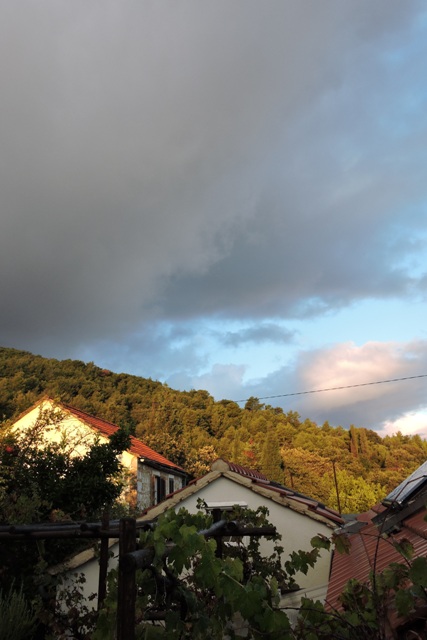
Terms that I use in my blog are often relative. Take the word “cold” for example.
With a readership from around the world, for some people English may not be their first or even second language. So I make a conscious effort to choose words and phrases which ensure that my blog can be understood by everyone.
However this is without sentences being overly simplistic. Even so, every reader will have their own frame of reference, based on their life experience.
I was about to start this week’s blog by saying “it has been quite cold here in Dol”. Then I thought better of it.
One of the first Christmases I enjoyed in the UAE I found to be unusual. The UAE is very tolerant for a Muslim country. You will find Christian Churches, next to Hindu Temples, by the side of Mosques and now in 2021, new Jewish Synagogues.
So it is unsurprising that Christmas is widely celebrated. What I did find surprising was to see snow and snowmen, reindeer and Santas in full view.
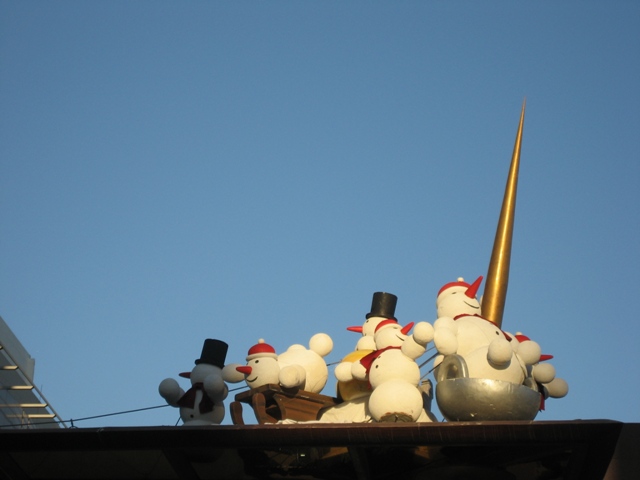
Then there were the enormous Christmas trees to be found in the shopping malls, like this one in Abu Dhabi Mall.
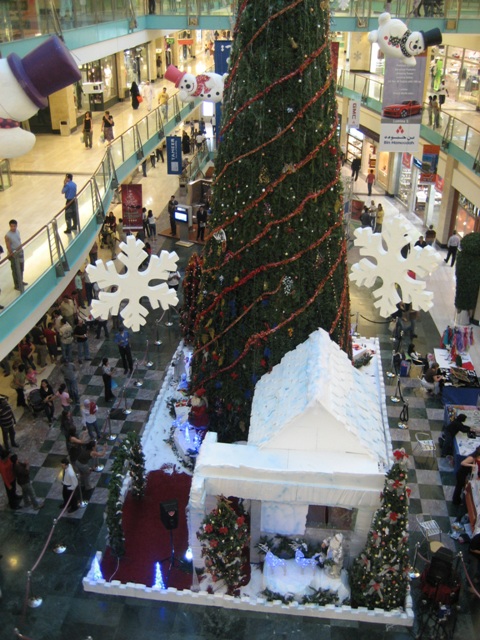
There are places in the northern Hajar mountains, close to the Straights of Hormuz, where snow occasionally falls.
However when it happens, it is an event SO remarkable that it makes the TV News.
So what do people, kids, who have never seen or felt snow, never thrown a snowball, think of the scenes? I never found out.
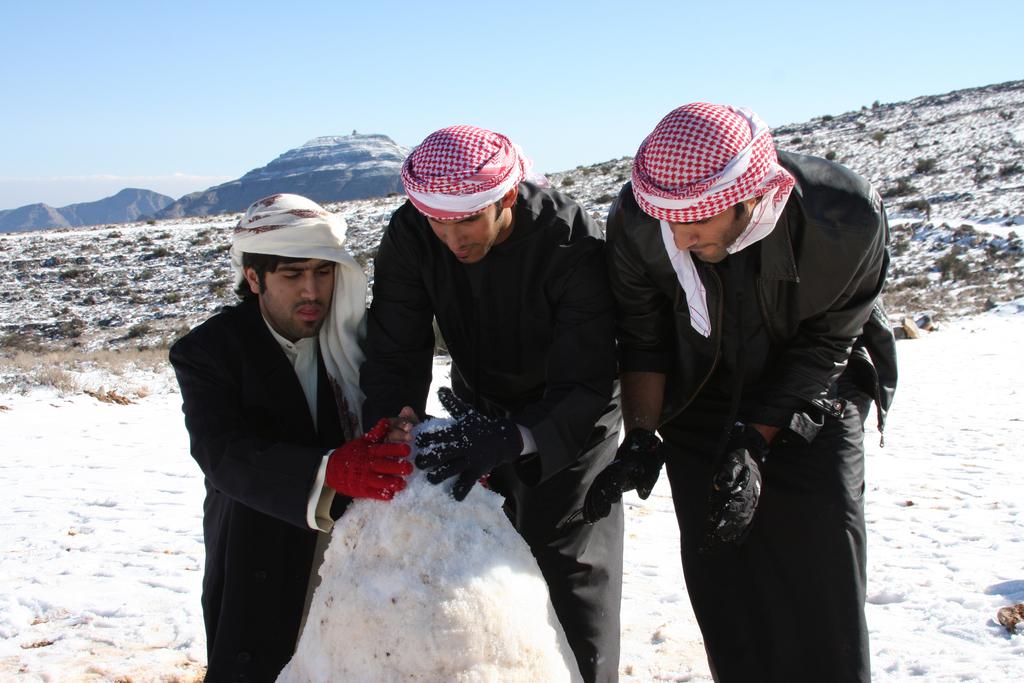
So when I say that this week has been cold in Dol, it is relative. It is probably shirt sleeve weather in Norway and Finland and “Brass Monkey” weather in Sub-Saharan Africa.
For Dol, it is slightly below the rolling average for this time of year. It has been cool enough to dig out my pullover, last worn in early April.
The cause has been a large area of low pressure in the Ionian Sea.
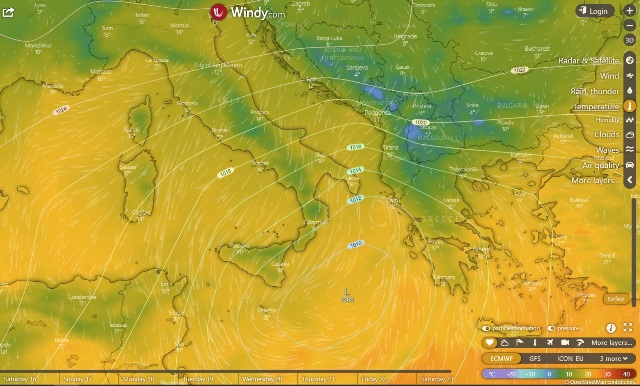
Winds rotate anticlockwise around low pressure systems. This depression dragged cold air from the central Balkans and east European plains down.
It is a true “Bura”, the kind which in mid winter can freeze the spray on the Adriatic sea.

On Hvar any wind which comes from a generally northerly direction tends to be called a “Bura”. But from a strictly meteorological perspective, this is the only true Bura.
When the wind was at it’s strongest, I put my NATO sweater on to work outside. The first time this autumn that I have needed a sweater.
What will the rest of the winter be like? Well the long range forecast for northern Europe suggests that this winter will be colder in some places that the average.
That of course means that in other places, it will be warmer than the average. I’ll let you decided which category you are in.
A month ago I was taking photographs of the rising full moon in shorts and a Tee shirt.
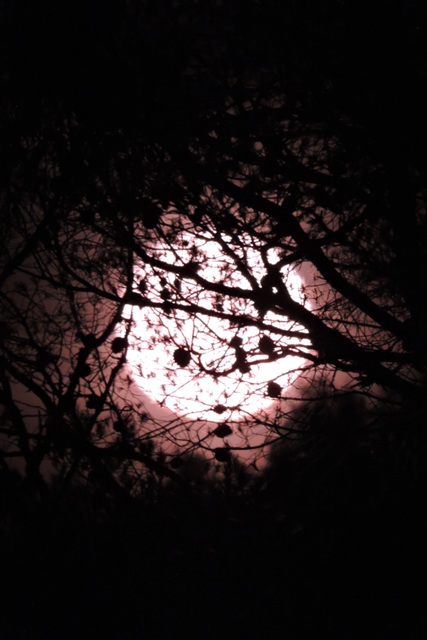
It is full moon again this week on the 20th October. However I will not be outside to watch the moon rise.
Meanwhile readers in the Antipodes are already cleaning the barbie, pressing their shorts and looking forward to a lovely summer….
The BII
I have found several adult Preying Mantis this week.
They come in varying colours from light sand through brown to dark green. However these are the first I have seen all year.
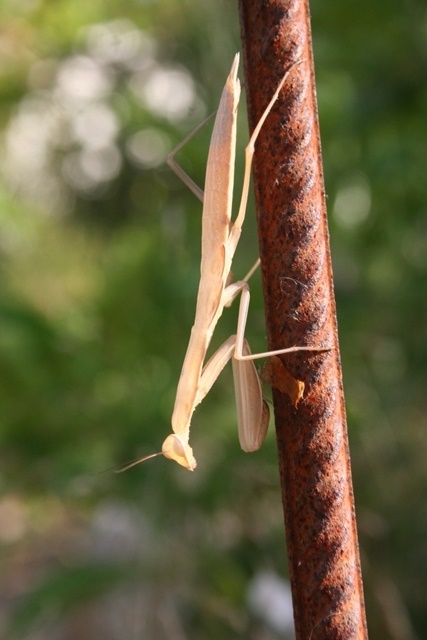
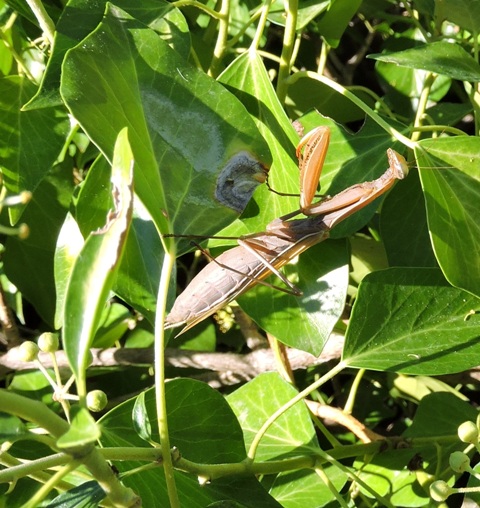
This species of insect is one of our indigenous groups. But whereas I usually find nymphs in the spring and see juveniles during the summer, there were none to be seen this year.
I did notice at the time that they were absent and put it down to the unusually hot weather. I’m pleased that some have survived to adulthood and will hopefully have laid eggs for next year’s brood.
In past years when I have found autumn stragglers, I have put them in the greenhouse, where there is food but they have never survived over the winter.
I noticed this week that the latest BII has been published.
Biodiversity is essential to the life of the planet at a macro level, and to my meagre plot at a micro level.
I have remarked before that I seem to have a good variety of insect life, all of which I encourage.
The Biodiversity Intactness Index (BII) was initially proposed in 2005 as a sound, sensitive, easily understood and affordable biodiversity indicator.
This index of species can easily be applied at any spatial scale, from the local garden at the micro level to large areas at the macro level. It would allow for comparison with a policy target and a baseline.
BII is defined as the average abundance, across a large and functionally diverse set of species, relative to their reference populations.
The index or reference would ideally be populations before the impacts of modern industrial society were felt. However we are too late now for that kind of index.
Once again, I have no frame of reference here apart from my observations which are over a microsecond in evolutionary time.
I had a conversation over coffee with neighbours this week about hornets. They were saying that they had killed several which had got into their house.
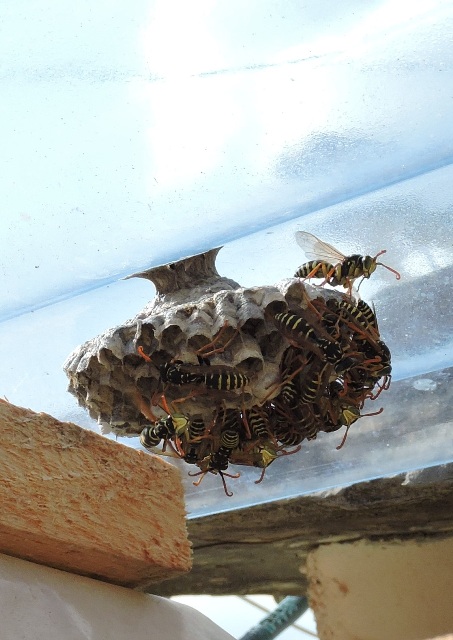
Apart from the Tiger Mosquito which is an alien invasive species here, I try not to kill anything. But that especially applies to wasps and hornets which really are gardeners friends.

I pointed my neighbours to the recent Rutherford and Fry investigation into the value of wasps to gardeners and horticulturists.
They had no idea of the work that these insects do in removing aphids and caterpillars to feed their young.
One discussion I was appalled to hear was that one neighbour had found a hibernation roost of bats. This he had proceeded to “shoo away” as he didn’t want them in his buildings.
I would love to find a roost of an absolutely protected species like bats, somewhere around my home. They would get absolute protection from me.
What this highlighted is that there is a complete lack of knowledge here about the benefit that everything from insects, (invasive mosquitos apart) through to mammals and birds bring.
This together with ignorance about what the result of declining populations of these “gardeners friends” will be to life on the planet does not bode well.
The BII is important because the reducing of biodiversity will affect us all.
Rodent proofing completed
On a showery Monday I finished off making the Konoba vermin proof for the winter.
Last week I completed filling the gaps between the stone walls and my doors with expanding foam. There was one remaining problem, a gap under one of the doors.
I thought I had been really careful when I measured how much to cut off the bottom of the door to make a tight fit with the new floor.
What I hadn’t appreciated was that the new floor was slightly uneven and close to the wall, it is about 12 mm higher than in the centre.
So when I measured, I used the hinges which meant that the door fits perfectly at the wall but there was a gap in the centre which a mouse could easily squeeze through.
I had a length of draught excluder brush, which after cutting to size, I elongated fixing holes in the centre and outside edge. This allows the brush to move up and down.
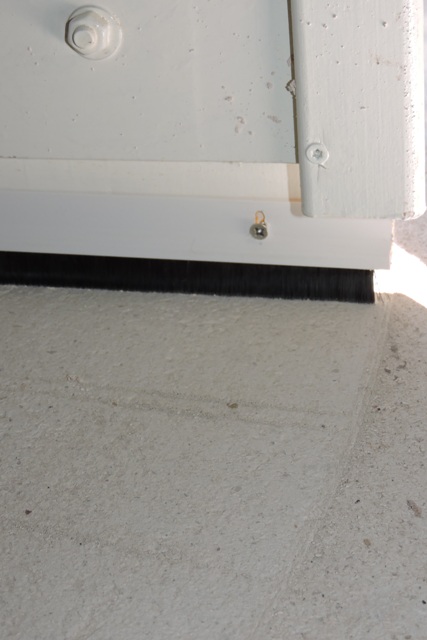
When the door is open, the brush rises with the floor by the wall. When the door closes, the brush falls so it maintains contact with the concrete.
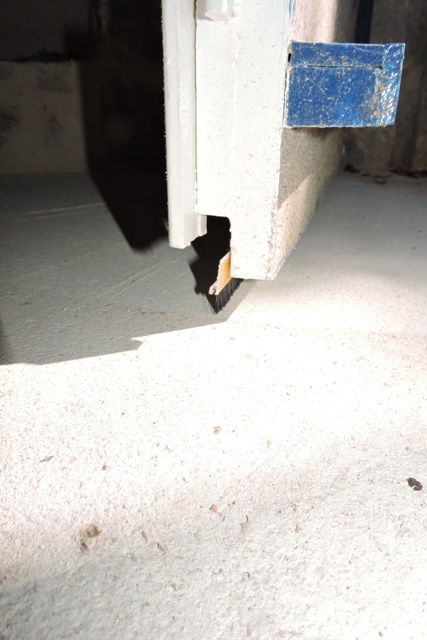
I needed to do a couple of adjustments to get the rise and fall just right.
But now I have doors which are completely sealed against any small rodents which are looking for somewhere warm for the winter.
Hibernating moths
I made an unusual discovery this week.
The days are still sunny although it has felt cold as a Bura wind swept in from the north east.
It is pleasantly warm in the strong autumn sunshine, but cool as soon as the sun dips behind the southern hills.
As the days shorten and the temperature drops, so insects and mammals look for places to hibernate over the winter.
At least I don’t have Brown Bears coming out of the Maquis trying to find food and a bed for the winter… . The Brown Bear is depicted on the back of all Croatian 5 Kuna coins.
Early in the week I was preparing to move a refrigerator from the utility room into the Konoba. This is so I am ready for doing more work on the inside of the building.
This machine has a top freezer compartment and a large, lower normal fridge. I opened the top door just to check that the fridge was completely empty before it was moved.
As I opened the door some movement in the corner, by the hinge caught my eye.
Looking closely there seemed to be some small pieces of cloth but one was moving, albeit very sluggishly. I recognised it straight away from its colouring as one of our Hummingbird Hawk Moths.
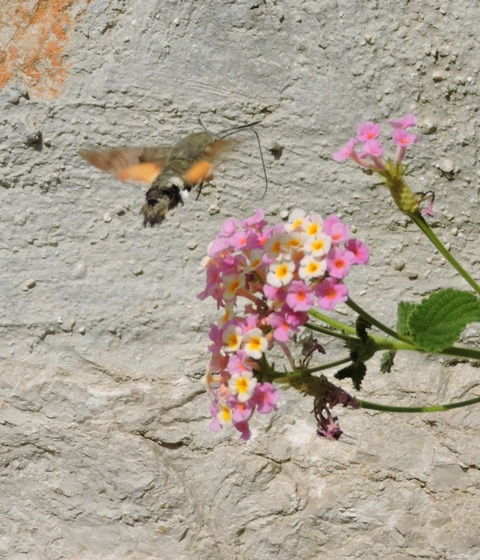
I know these moths overwinter by hibernation, seeking somewhere inside a building, but out of sight.
By September they are coming in through open doors and windows, looking for the right place. However I have never seen, nor heard of moths hibernating together in a roost.
So I deliberately didn’t take a photograph so as not to disturb them and carefully shut the door again.
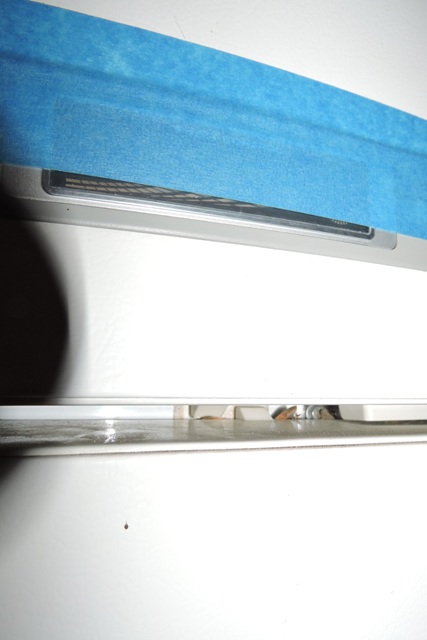
My quick impression was that there was not less than six and perhaps 10 all huddled together. They were neatly packed between the doors, around the hinge.
I am aware that there are a number of species here which do find hibernation roosts, things like Bats and some species of snake.
The North American Monarch butterfly migrates to overwintering grounds in the Morelos and Puebla regions of Mexico. But the Monarchs don’t actually hibernate.
So this practice is completely new to me.
Heath and Robinson
When I looked last Sunday at the blog readership statistics for the weekend, 37% of readers were in the USA.
The software records the country where the device logged in from, the operating system and the kind of device used. Almost 50% of readers view the blog on a mobile device or smart phone.
I have an Idiomatic dictionary of English, because especially in the USA, the main language is English, but not as we Europeans know it!
For example, what on the east side of the Atlantic is known as a rubber, used by kids as small missiles in the classroom, are called erasers in the USA.
Sometimes though there is no common term.
If I use “Heath” and “Robinson” together in a sentence to describe something, to an English reader it will immediately conjure up an image of twine, Sellotape and ingenuity used in equal proportions to create a temporary fix.
In Australia and New Zealand, it will probably be the same, but elsewhere? I doubt the drawings of W. Heath-Robinson are very well known .
Even there in my last sentence, what is universally known in the UK as “Sellotape” is in North America called “Scotch Tape”.
Both are brand names. W Heath-Robinson was an English cartoonist, illustrator and artist, best known for drawings of whimsically elaborate machines designed to achieve simple objectives.
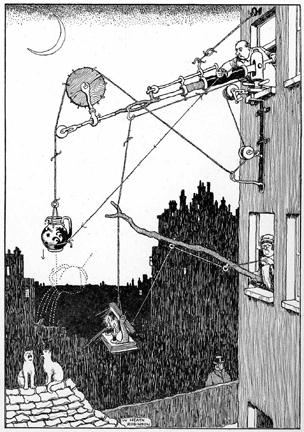
This week I have had a problem with my solar water heater.
I took the panels off which prevent ⅔ of the fierce Mediterranean summer sun from reaching the high efficiency tubes. Only to find that I had a weeping leak from a couple of the seals around the pipes.
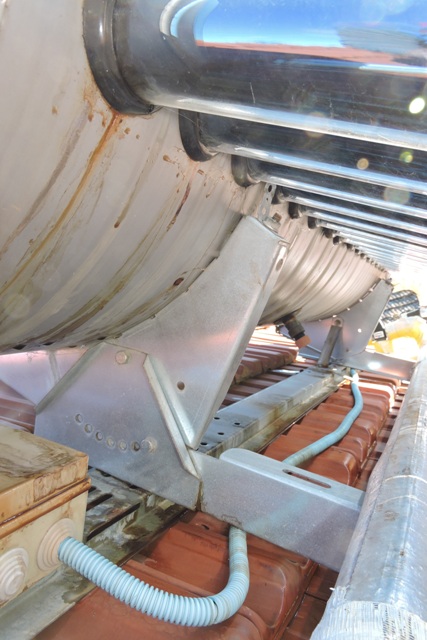
I contacted the makers in Italy who expressed concern that it might be something more serious than a failed rubber seal and I needed to do a pressure test. They even kindly sent me a drawing.
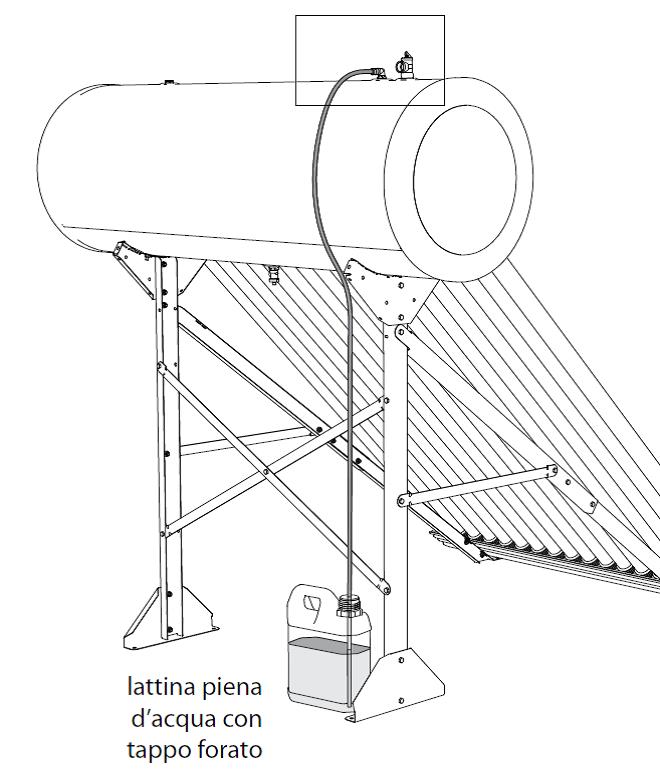
Up on the roof, I removed the vent on the top of the tank and found the thread was ¾”.
Going through my plumbing parts, I had all sorts of connectors, but no ¾” with a link where I could connect a pipe.
I had a selection of half inch and one-inch connectors, but no three-quarter inch.
So this is where Heath-Robinson comes in.
I cannibalised a plumbing fitting I did have, to get the ¾” joint. Then I used an irrigation tap connector, reversed, to fit the metal fitting.
Then I added a tap connector and another couple of irrigation bits to connect the length of hose onto the vent.
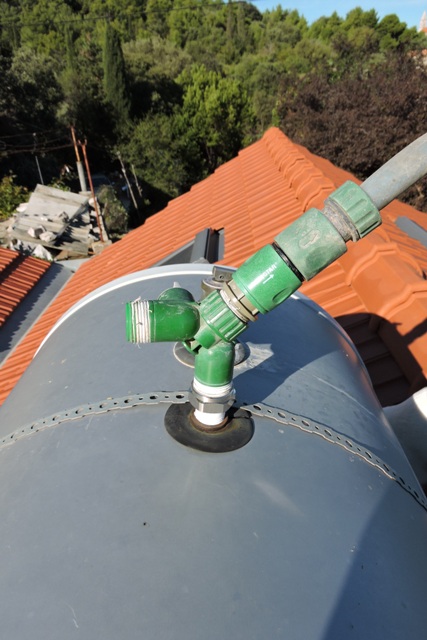
It does not look very elegant but it works. This is the essence of a Heath-Robinson contraption.
Probably if I was to describe it for an Idiomatic Dictionary, I would say a Heath-Robinson device is a temporary fix, using ingenuity and whatever you have to hand, all cobbled together into a single contraption. But when complete it must work.
There is no leak between the low and high pressure sides of the solar heater, so it is just a failure of one of the seals. A new set is on order from Italy.
Before refitting the pressure release valve, I added water to the tank to bring it up to the correct level.
As soon as there are a few cloudy days in November and once the new seals arrive, I need to drain and flush the tank, then install the new ‘O’ rings.
Beans are out
I’ve been waiting for the right moment to plant out my Fava (Broad) Beans.
These are the ones which I started by soaking overnight on the 5th September. After they germinated, I planted them in cardboard tubes on the 8th September, in the greenhouse.
I am a great believer in rain being the best irrigations system you can have. But until last week, we have had no rain at all, so the ground has been as dry as dust.
I prepared the bed, dug a trench to take the tubes and have been waiting for some rain.
We have now had over 100 mm so the soil is nicely moist, down to a reasonable depth.
Picking the right time to plant them has been important. Too early and the roots will not take to the soil. Too late and they will be too big. They are verging on this now, with some plants being 30 cm tall.
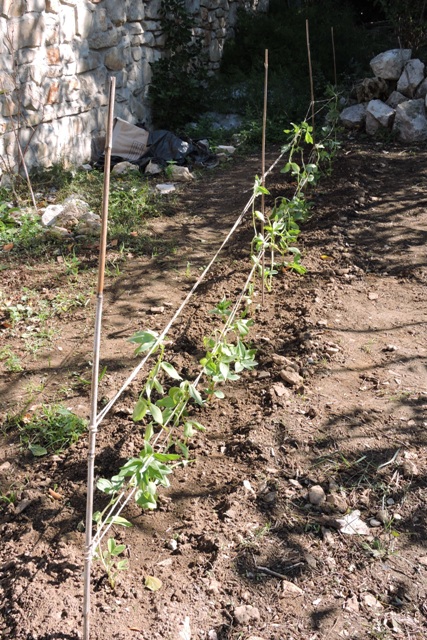
I waited until the heavy rain has finished, at least for the time being and planted them on Monday morning.
Not long afterwards there was a nice shower of rain. Just enough to water them in, but not so heavy that it damaged the tender young leaves.
I have put some canes and string in as well, so there is something to support them as they grow.
Although there is some cold forecast for this week, it will be followed by warm weather again. This gives me hope that there might be fresh beans ready for Christmas.
For good measure and as a successional crop, I have also planted a row of beans directly into the soil too. NCG
Looking back – Week 41
This is the start of the weekly section, with links to past issues of the blog.
2014/41 A door for all seasons
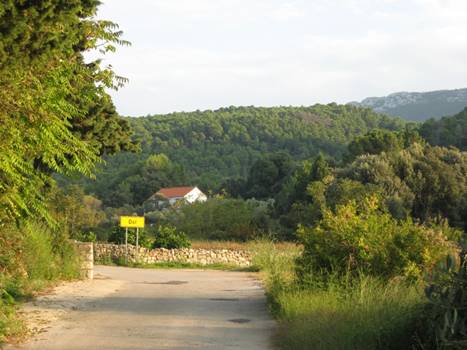
2015/41 The curse of the Packers and Stuffers
2016/41 How to be an instant expert
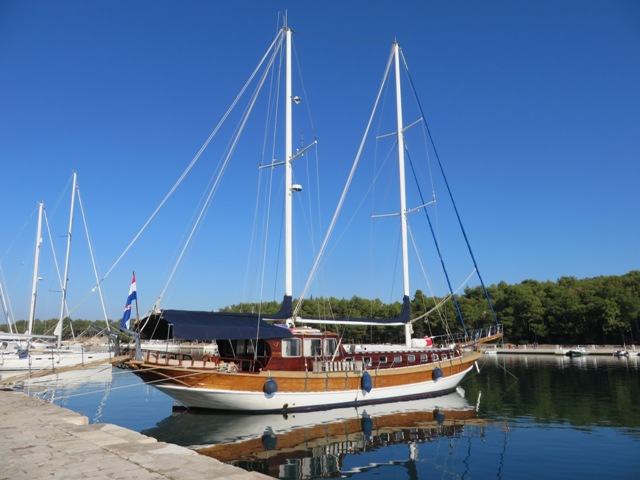
2017/41 Hedgehogs in the garden!
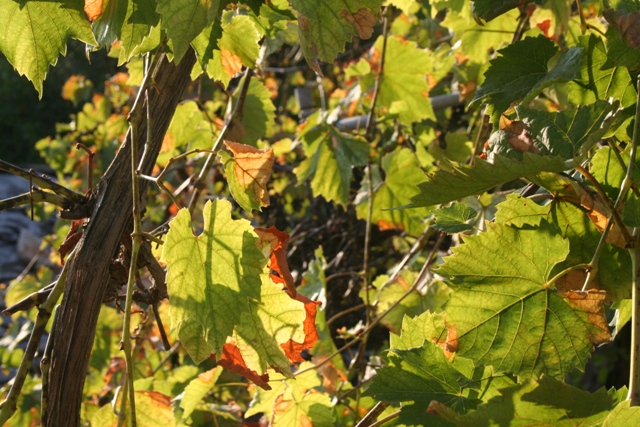
2018/41 Well clarted boots

2019/41 Never feed them after midnight
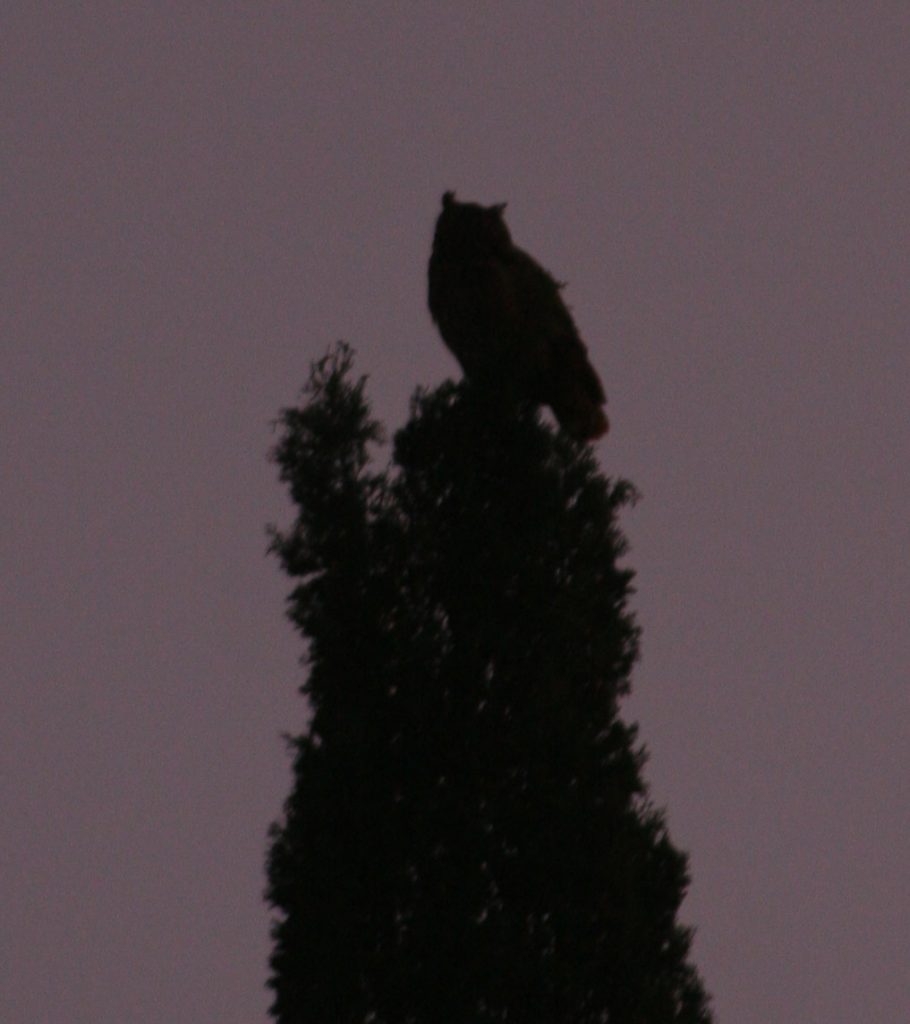
2020/41 New kit on the block
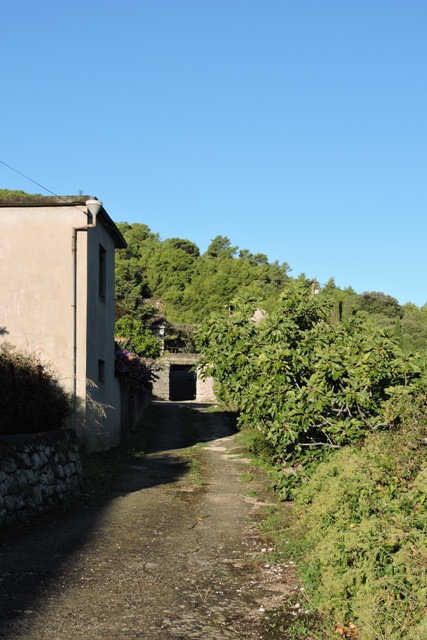
5 Responses
Richard Ellis
Norm,
Referred to as: https://en.wikipedia.org/wiki/Rube_Goldberg_machine
in the U.S.
Stay warm and healthy.
Marcy Fletchall
Hi Norman, great blog. Love the pictures. Here in Colorado, we have had a brief snow shower two days ago, and now it’s in the 60’s again; however, the nights are at freezing temps. This past summer we had a very unusual issue with yellow jackets. They were everywhere to the point you couldn’t sit outside and eat a meal. They would want your food, and would buzz and hover until you gave something up or went inside. It was noted that there was no report of aggressive bees in the past.
I planted bee and butterfly flowers this year, and for the most part, there have been now butterflies around. Climate breakdown of heat and erratic weather has impacted all of us. The flowers were incredibly beautiful though. Planted squash; however the adult ones are as hard as a rock, and cooking doesn’t even begin to soften them up. Puzzeling. Stay safe. Marcy
Michael
Norman,
bad news I’m afraid. Mice have the ability to squeeze through gaps much smaller than their apparent body dimensions owing to the flexibility of their skeletal structure. Thus a mouse with a cross section that looks to be about 1″/2.5cm can get through a gap 50-60% of that figure. My garage doors are almost perfectly flush fitting, yet in cold winters they still manage to get in. On one occasion they ate a hole into a sack of dog food and set up happy home inside to become unhealthily obese. Worse still, they can travel some distance up rough walls. Unless you have a spring pressing your cunning draught excluder firmly downwards I suspect that a determined Croatian mouse may wiggle underneath.
Terry Hubbard
Was that a “Never why I am Chief Constable” NATO sweater Norman.🤣🤣 ????
RIP David Hall. Keep well Norman.
Brian Homans
Norman, We once visited a church in Norfolk that had a colony of bats in the ceiling. All the pews were covered in polythene sheeting which in turn was covered in bat droppings and urine. The stench was horrendous. There was a notice by the door which said something like ‘We apologise for the state of our lovely building but bats outnumber cleaners by 200 to 1.’ Despite them being a protected species I can understand some peoples’ aversion to them.